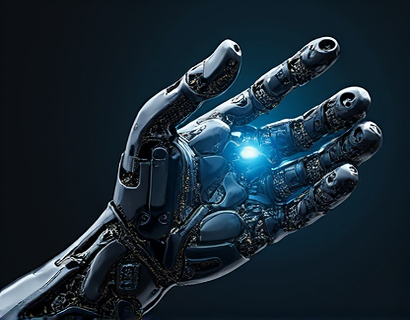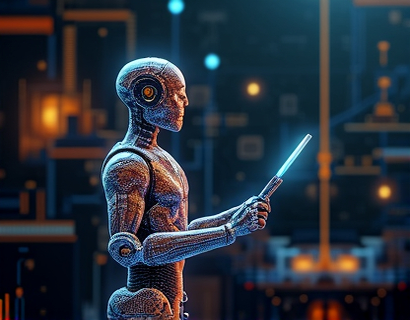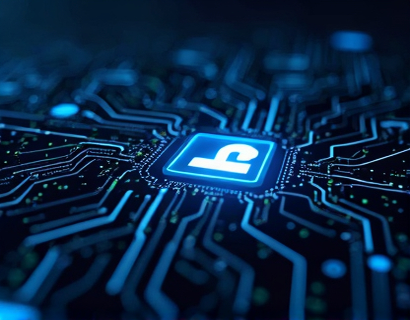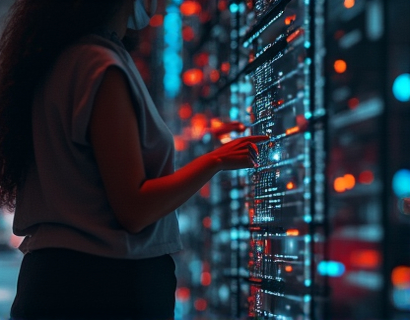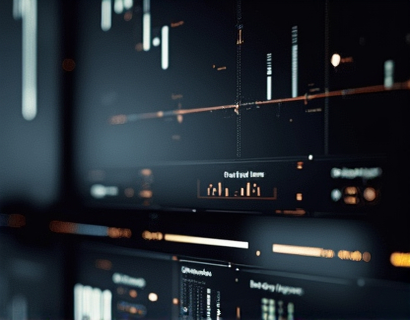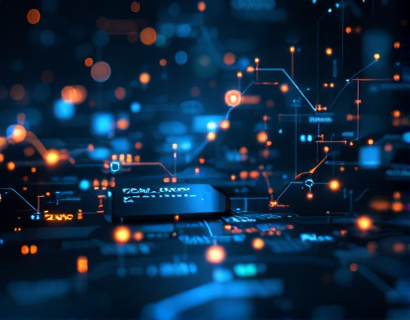Crypto-Driven AI Solutions: Pioneering the Next Generation of Digital Transformation
The convergence of blockchain technology and artificial intelligence (AI) is ushering in a new era of digital transformation. This intersection promises to revolutionize how applications and services interact, offering unprecedented levels of security, transparency, and efficiency. As tech innovators and early adopters increasingly explore the potential of cryptocurrency and AI, it becomes crucial to understand how these technologies can be harnessed to drive growth and engagement in the digital age.
Understanding the Synergy Between Blockchain and AI
Blockchain, at its core, is a decentralized ledger technology that ensures data integrity and security through cryptographic hashing and consensus mechanisms. AI, on the other hand, is a branch of computer science that focuses on creating systems capable of performing tasks that traditionally required human intelligence, such as learning, reasoning, and problem-solving. When combined, these technologies can create robust, autonomous, and trustworthy systems.
The synergy between blockchain and AI lies in their complementary strengths. Blockchain provides a secure and transparent environment for data storage and transaction processing, while AI can analyze vast amounts of data to derive insights and make intelligent decisions. This combination can lead to more secure, efficient, and intelligent applications and services.
Enhancing App and Service Interactions
One of the most significant impacts of crypto-driven AI solutions is the enhancement of app and service interactions. Traditional apps often rely on centralized servers for data processing and storage, which can lead to bottlenecks, security vulnerabilities, and privacy concerns. By integrating blockchain and AI, apps can operate on a decentralized network, reducing the risk of single points of failure and enhancing data privacy.
For instance, AI-driven algorithms can be deployed on a blockchain network to process and analyze data in real-time, without the need for a central authority. This not only speeds up data processing but also ensures that the data remains tamper-proof and transparent. Smart contracts, self-executing contracts with the terms directly written into code, can automate and enforce the execution of agreements between different apps and services, reducing the need for intermediaries and lowering transaction costs.
Security and Trust in Decentralized Systems
Security and trust are paramount in the digital landscape, and crypto-driven AI solutions offer significant advancements in these areas. Blockchain's inherent security features, such as immutability and cryptographic hashing, ensure that once data is recorded, it cannot be altered without detection. AI can further enhance security by detecting and mitigating anomalies and potential threats in real-time.
For example, AI-powered security systems can monitor blockchain networks for unusual activity patterns that may indicate a cyberattack. These systems can automatically trigger countermeasures, such as isolating affected nodes or alerting administrators, thereby minimizing the impact of security breaches. Additionally, the transparency provided by blockchain ensures that all transactions and interactions are visible and verifiable, building trust among users and stakeholders.
Efficiency and Scalability
Efficiency and scalability are critical factors for the success of any digital solution. Crypto-driven AI solutions can significantly improve these aspects by leveraging the distributed nature of blockchain and the computational power of AI. Decentralized networks can handle a higher volume of transactions and data processing without the overhead of centralized infrastructure.
AI algorithms can optimize resource allocation and network performance, ensuring that the system operates at peak efficiency. For instance, machine learning models can predict network congestion and dynamically adjust resource distribution to maintain optimal performance. This not only enhances the user experience but also reduces operational costs for service providers.
Use Cases in Various Industries
The potential applications of crypto-driven AI solutions span across multiple industries, each with unique challenges and opportunities. Here are a few notable use cases:
- Finance: Decentralized finance (DeFi) platforms can leverage AI to enhance risk management, fraud detection, and algorithmic trading. Smart contracts can automate complex financial transactions, reducing the need for intermediaries and lowering costs.
- Healthcare: AI-driven analytics on blockchain can secure patient data and enable seamless sharing between healthcare providers, improving diagnosis and treatment. AI can also predict patient outcomes and optimize resource allocation in hospitals.
- Supply Chain: Blockchain can provide a transparent and immutable record of the supply chain, while AI can optimize logistics and demand forecasting. This combination can reduce costs, improve efficiency, and ensure product authenticity.
- Entertainment: Crypto-driven AI can enhance content recommendation systems, ensuring users receive personalized and relevant content. Blockchain can also facilitate fair compensation for content creators through transparent and automated royalty distribution.
Building a Roadmap for Tech Innovators
For tech innovators and early adopters looking to harness the power of crypto-driven AI solutions, here is a roadmap to consider:
1. Educate Yourself
Start by gaining a solid understanding of both blockchain and AI technologies. Explore online courses, books, and workshops that cover the fundamentals and advanced topics in these fields. Stay updated with the latest research and developments through industry conferences and forums.
2. Identify Use Cases
Identify specific pain points in your current applications or services that can be addressed by integrating blockchain and AI. Consider areas such as data security, efficiency, and user experience. Conduct a thorough analysis to determine the feasibility and potential impact of these solutions.
3. Prototype and Test
Develop a prototype to test the integration of blockchain and AI in a controlled environment. Use blockchain platforms like Ethereum, Hyperledger, or Corda, and AI frameworks such as TensorFlow or PyTorch. Focus on creating a minimum viable product (MVP) to validate your concept and gather feedback.
4. Collaborate and Partner
Collaboration is key in the crypto and AI space. Seek partnerships with other innovators, research institutions, and industry experts to enhance your project's scope and impact. Join blockchain and AI communities to network and find potential collaborators.
5. Scale and Optimize
Once the MVP proves successful, scale your solution to a broader audience. Continuously monitor performance and optimize the system to handle increased load and complexity. Leverage AI to automate scaling processes and ensure the system remains efficient and reliable.
6. Ensure Compliance and Ethical Considerations
Navigate the regulatory landscape carefully, ensuring that your solution complies with relevant laws and standards. Address ethical considerations, such as data privacy and algorithmic bias, to build trust and credibility among users.
Conclusion
The integration of blockchain and AI represents a transformative force in the digital world, offering unparalleled opportunities for innovation and growth. By enhancing app and service interactions, ensuring security and trust, and improving efficiency and scalability, crypto-driven AI solutions can drive the next generation of digital transformation. For tech innovators and early adopters, embracing this synergy is not just an option but a necessity to stay competitive and relevant in the evolving tech landscape.




